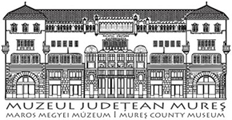Marisia - Maros Megyei Múzeum Évkönyve 32/2. (2012)
Articles
158 Zs. Nyárádi churches named after saints, and that by the 13th or 14th century there was already a roman style church here. This assumption is clearly supported by the archaeological investigations. Places with names beginning with the ‘Saint’ prefix were quite popular within the Kingdom of Hungary; they started becoming fashionable during the beginning of the 12th century, were quite common during the 13th century, but they are no longer common following the 14th century (Kniezsa 1943, 131). The name’s second part, the personal name Imre, suggests the son of King Stephen I of Hungary, a saint who lived during the Árpád dynasty period. The first written record of the settlement dates back to 1566 when it appears mentioned as Zentijmreh. Among the names in the list of men in the army of King John Sigismund Zápolya there was a primipilus named Máté Berze (SzOkl II, 204). During the following year, in the fifty denary tax summary from the villages of Udvarhelyszék one may find only four households (SzOkl II, 220). This low number may be explained by the fact that the greater part of the village’s population were living as serfs in service of the castle of Udvarhely: “posesionem Zenth Imreh vocatam ad arcem nostrum Udwarhelly existentem habitam” (SzOkl IV, 54). A diploma dating back to 1568, informs us that the surrounding villages, including Szentimre, came into conflict with the town because they forbid the use of their forests. In order to remedy the situation, John Sigismund commands Michael Telegdy, the seats and the commander of the castle to reinstall the former order of Queen Isabella (SzOkl III, 328). A diploma from February 1577 informs us that the settlement has ceased to exist (SzOkl IV, 54). We may find the reasons for this in another diploma: “because their space was so scarce they merged two villages, Giarosfalwa and Zent Imreh with the town so that the villagers moved to the town and made their boundaries one” (SzOkl III, 185). As such, Szentimre was not the only settlement standing in the way of the town’s development. Giarosfalwa was assimilated by the town on John Sigismunds command in 1571 (SzOkl II, 314-315). With the assimilation of these two villages the town gained access to large amounts of land and the southern and south-eastern borders were free to expand. The large wooded areas were presumably quite important considering the fact that the town’s expansion did not start toward a northern or eastern direction. During later centuries, of course these territories were also assimilated, but at this point acquiring more space was no longer the issue but rather the settlements had simply completely grown together with the town. The inhabitants of the former villages were moved into the town, where the townsfolk helped them rebuild their houses and they enjoyed six years of being free from having to pay taxes. The street where they were moved was named after their former village. Following their movement into the town, the villagers of Szentimre were compensated to some extent, but the loss of family heirlooms in many cases became the object of lawsuits. During the indemnification, the biggest problem was posed by the village’s largest landowners, the Berze family. They could not be compensated from the town’s lands because then the town would have not drawn profit from the village’s assimilation. The primipilus family was first offered new land in Rugänesti, but they did not agree to this. The next place was Säncrai, where the equivalent of the lands in Szentimre was measured, estimated to around generally four heritages, but this was also unsatisfactory and for this reason they initiated a lawsuit against the town, demanding back their old ancestral lands (SzOkl III, 284-287). In 1591 we may witness a new lawsuit, when Pál Kőműves, once an inhabitant of Szentimre, had died, and his possessions were left to Misses Mihály More, whose husband sought to acquire
